
Pac-Man, originally called Puck Man in Japan, is a 1980 maze action video game developed and released by Namco for arcades. In North America, the game was released by Midway Manufacturing as part of its licensing agreement with Namco America. The player controls Pac-Man, who must eat all the dots inside an enclosed maze while avoiding four colored ghosts. Eating large flashing dots called "Power Pellets" causes the ghosts to temporarily turn blue, allowing Pac-Man to eat them for bonus points.
An action game is a video game genre that emphasizes physical challenges, including hand–eye coordination and reaction time. The genre includes a large variety of sub-genres, such as fighting games, beat 'em ups, shooter games, rhythm games and platform games. Multiplayer online battle arena and some real-time strategy games are also considered action games.

Wonder Boy in Monster Land, known by its original arcade release as Wonder Boy: Monster Land, is a platform video game developed by Westone Bit Entertainment and released by Sega in Japanese arcades in 1987 and for the Master System in 1988, with a number of other home computer and console ports following. The game is the sequel to the 1986 game Wonder Boy and takes place eleven years after the events in the previous game. After enjoying over a decade of peace on Wonder Land following the defeat of the evil King by Tom-Tom, later bestowed the title "Wonder Boy", a fire-breathing dragon called the MEKA dragon appeared; he and his minions conquered Wonder Land, turning it into "Monster Land". The people, helpless due to their lack of fighting skill, call for Wonder Boy, now a teenager, to destroy the monsters and defeat the MEKA dragon. Players control Wonder Boy through twelve linear levels as he makes his way through Monster Land to find and defeat the MEKA dragon. Players earn gold by defeating enemies and buy weapons, armor, footwear, magic, and other items to help along the way.
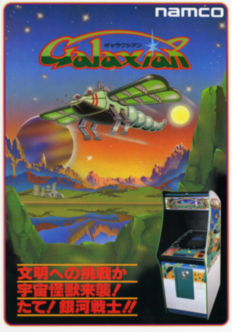
Galaxian is a 1979 fixed shooter arcade video game developed and published by Namco. The player assumes control of the Galaxip starfighter in its mission to protect Earth from waves of aliens. Gameplay involves destroying each formation of aliens, who dive down towards the player in an attempt to hit them.

Pssst is an action video game developed and published by Ultimate Play the Game that was released for the ZX Spectrum in June 1983. In the game, Robbie the Robot has to protect his plant as it is attacked by various insects, each of which needs a different repellent to neutralise it. Pssst was the second game to be released by Ultimate, after Jetpac.

Dig Dug is a maze arcade video game developed by Namco in 1981 and released in 1982, distributed in North America by Atari, Inc. The player controls Dig Dug to defeat all enemies per stage, by either inflating them to bursting or crushing them underneath rocks.

Katamari Damacy is a third-person puzzle-action video game developed and published by Namco for the PlayStation 2. It was released in Japan in March 2004 and later in North America in September. Designer Keita Takahashi struggled to pitch the game to Namco's superiors, eventually seeking student aid from the Namco Digital Hollywood Game Laboratory to develop the project for less than US$ 1 million. As director, Takahashi emphasized concepts of novelty, ease of understanding, and enjoyment.

Tranz Am is an action video game developed and published by Ultimate Play the Game that was released for the ZX Spectrum in July 1983. The game is set in a post-apocalyptic version of the United States and centres around a racing car driver on his quest to obtain the Eight Great Cups of Ultimate, which are scattered throughout the country.

3D Monster Maze is a survival horror computer game developed from an idea by J.K. Greye and programmed by Malcolm Evans and released in 1981 for the Sinclair ZX81 platform with the 16 KB memory expansion. The game was initially released by J. K. Greye Software in December 1981 and re-released in 1982 by Evans' own startup, New Generation Software. Rendered using low-resolution character block "graphics", it was one of the first 3D games for a home computer, and one of the first games incorporating typical elements of the genre that would later be termed survival horror.

In video gaming, the HUD or status bar is the method by which information is visually relayed to the player as part of a game's user interface. It takes its name from the head-up displays used in modern aircraft.
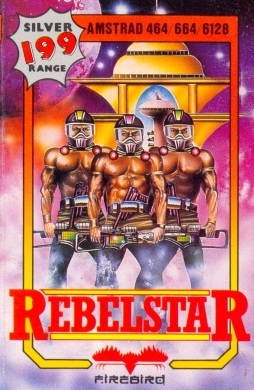
The Rebelstar games are a series of turn-based tactics video games designed by Julian Gollop. Rebelstar Raiders was published in 1984 by Red Shift for the ZX Spectrum. It was reworked in machine code as Rebelstar, published by Firebird in 1986. A sequel, Rebelstar II, was published in 1988 by Silverbird. Rebelstar, but not its sequel, was also adapted for the Amstrad CPC home computer.
In video games, a level is any space available to the player during the course of completion of an objective. Video game levels generally have progressively increasing difficulty to appeal to players with different skill levels. Each level may present new concepts and challenges to keep a player's interest high.

A fast loader is a software program for a home computer, such as the Commodore 64 or ZX Spectrum, that accelerates the speed of file loading from floppy disk or compact cassette.

Ridge Racer is a 1993 racing video game developed and published by Namco. It was released initially on the Namco System 22 arcade system board and ported to the PlayStation console in 1994. It is the first title in the Ridge Racer series released for arcades and home consoles.
The ZX Spectrum's software library was very diverse. While the majority of the software produced for the system was video games, others included programming language implementations, Sinclair BASIC extensions, databases, word processors, spread sheets, drawing and painting tools, and 3D modelling tools.
Cheating in video games involves a video game player using various methods to create an advantage beyond normal gameplay, usually in order to make the game easier. Cheats may be activated from within the game itself, or created by third-party software or hardware. They can also be realized by exploiting software bugs; this may or may not be considered cheating based on whether the bug is considered common knowledge.
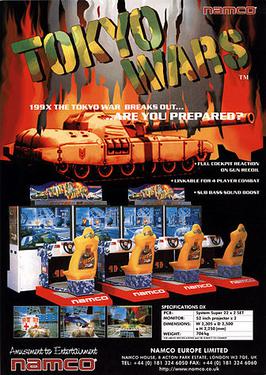
Tokyo Wars is a 1996 first-person shooter arcade game developed and published by Namco.
In video games, an open world is a virtual world in which the player can approach objectives freely, as opposed to a world with more linear and structured gameplay. Notable games in this category include The Legend of Zelda (1986), Grand Theft Auto III (2001) and Minecraft (2011).
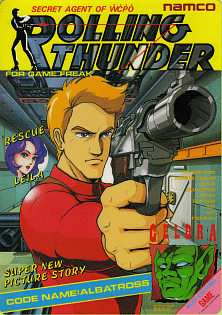
Rolling Thunder is a run and gun video game developed by Namco in Japan and Europe and released in 1986 as a coin-operated arcade video game using the Namco System 86 hardware. It was distributed in North America by Atari Games. The player takes control of a secret agent who must rescue his female partner from a terrorist organization. Rolling Thunder was a commercial success in arcades, and it was released for various home computer platforms in 1987 and the Nintendo Entertainment System in 1989. The original arcade game has been included in various classic game compilations as well. It influenced later arcade action franchises such as Shinobi and Time Crisis, which borrowed mechanics such as taking cover behind crates.
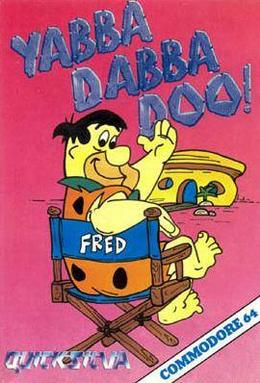
Yabba Dabba Doo! is a 1986 video game developed by British studio Taskset and published by Quicksilva for the Amstrad CPC, Commodore 64 (C64), and ZX Spectrum. It is based on the television series The Flintstones and is the first Flintstones video game.
















